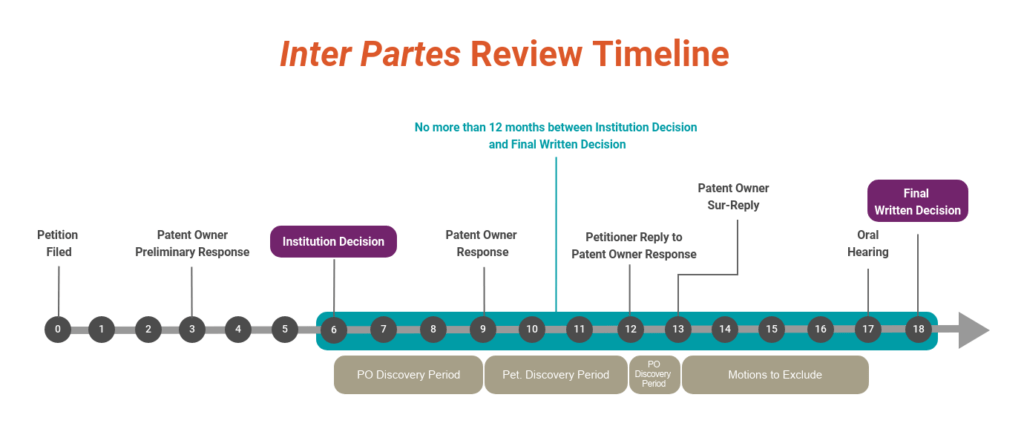Post-Grant Review
Post-Grant Review (PGR) is procedurally similar to IPR, but can only be initiated within 9 months of a patent's issuance so it fills that gap of time before an IPR can be filed. Further, a petition for review by a third party must be filed before that third party files any declaratory judgment on invalidity of the claims. In contrast to IPR, PGR prior art can also include evidence of public use, on-sale activity, or other public disclosures. PGR petitioners can also challenge patents on additional grounds, such as lack of written description, enablement, and subject matter eligibility, which are not directly available in an IPR petition.
Covered Business Method Review
Covered Business Method (CBM) review can only be initiated by a party charged with infringement of a CBM patent. A CBM patent is a patent that's essentially claiming way to do business like selling a product online. Like IPR, CBM review prior art consists of patents and printed publications and review can only be initiated 9 months after the patent issues (i.e. after PGR is unavailable). Unlike IPR, CBM review can challenge patents on the same broad grounds as PGR, such as subject matter eligibility. CBM review can be preferable to IPR in some circumstances due to the more limited estoppel provisions of CBM proceedings. Finally, the CBM review procedure is due to sunset in September 2020.
Ex Parte Reexamination
Ex Parte Reexamination (EPRx) allows a third party (such as a patent infringement defendant) to request the USPTO "re-examine" an already granted patent. This re-examination is limited to prior art consisting of patents and printed publications, which are submitted by the requestor or may be identified through searching by the Office. A re-examination amounts to a limited reopening of prosecution of the patent. However, it is conducted by a panel of three experienced examiners within a special unit at the USPTO as opposed to the single examiner that typically examined the patent in the first instance.
The data for EPRx challenges shows much more limited success rates for patent challengers. Since the inception of EPRx in 1981, only 13% of proceedings resulted in all claims cancelled when reexamination was requested by a third party.[4] In addition, EPRx allows a patent owner to both amend the existing claims to avoid the cited prior art and add new claims to the patent, thereby allowing the patent owner to potentially strengthen their patent in response to an EPRx challenge. And unlike IPR, the EPRx proceeding is entirely ex parte, which means the patent challenger has no direct involvement in the re-examination other than filing the initial request.
Conclusion
Defendants (or even potential defendants) in a patent infringement suit have several options available to them to challenge the validity of the asserted patent. If you have strong prior art in the form of patents and/or printed publications, you may find one of the many post-grant procedures, like IPR, to be an efficient and effective means of invalidating the asserted patent.
For a full comparison of all post-grant proceedings available to patent owners and challengers alike, Fish has created this useful spreadsheet describing the different post-grant proceedings.
[1] https://www.uspto.gov/sites/default/files/documents/Trial_Statistics_2019-10-31.pdf
[2] Id.
[3] Id.
[4] https://www.uspto.gov/sites/default/files/documents/ex_parte_historical_stats_roll_up.pdf
More questions? Contact the authors or visit Fish’s Intellectual Property Law Essentials.
Authors: Rick Bisenius, Dan Smith, and Ryan Petty

